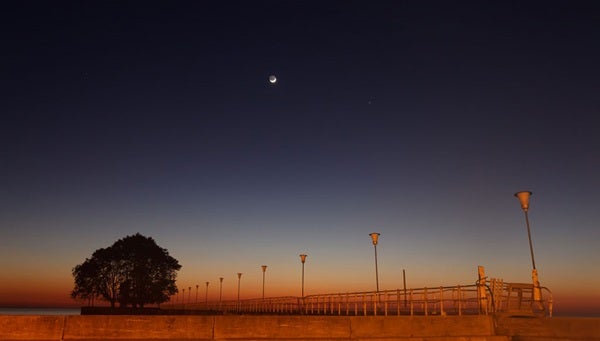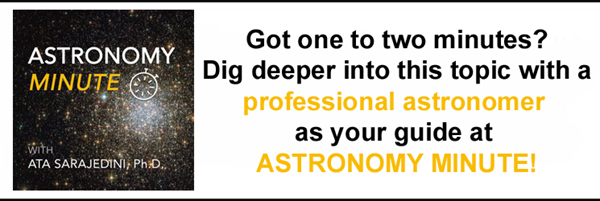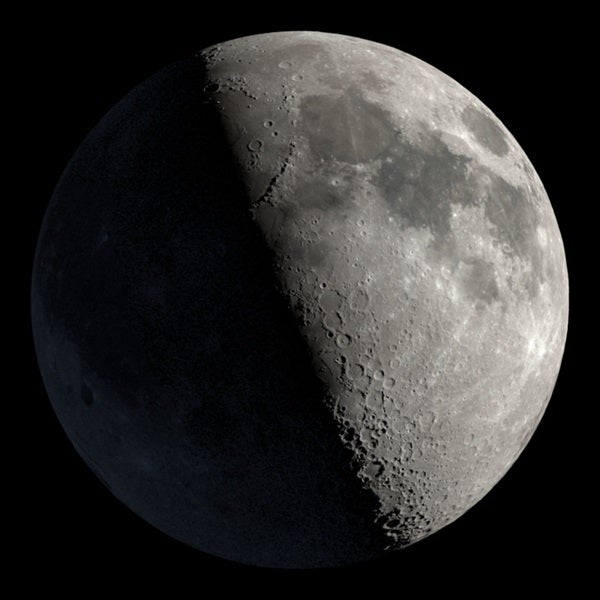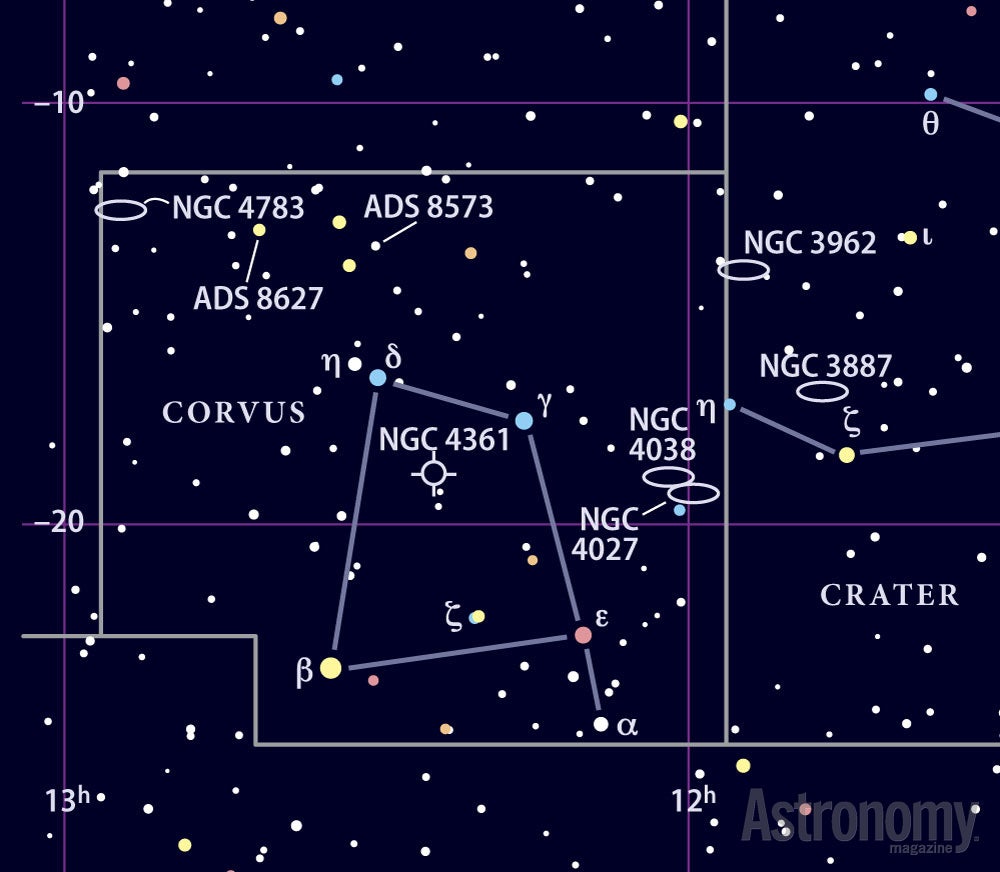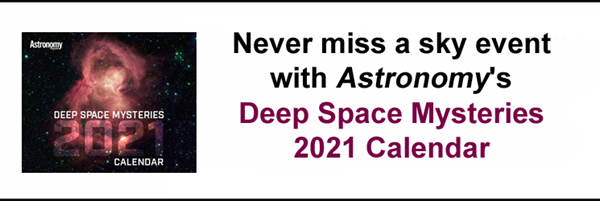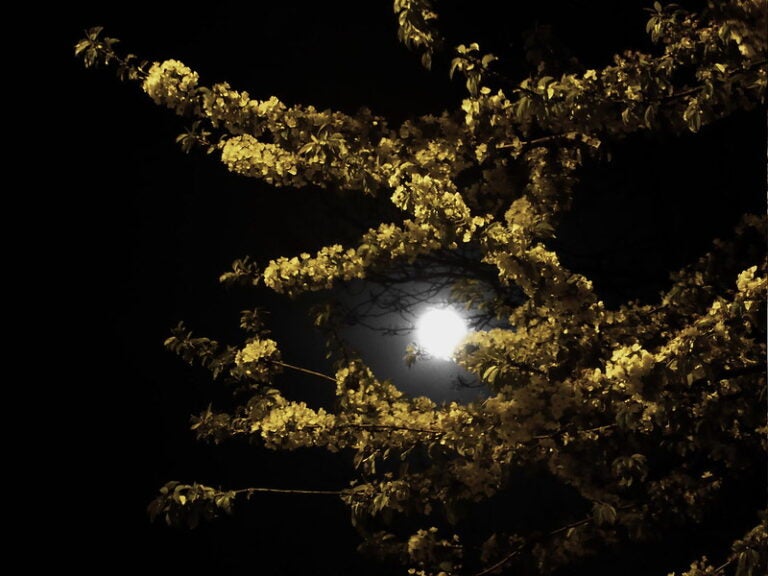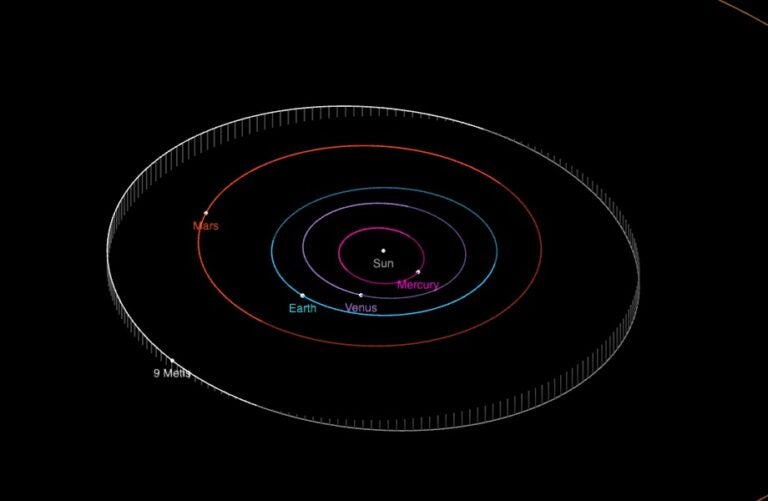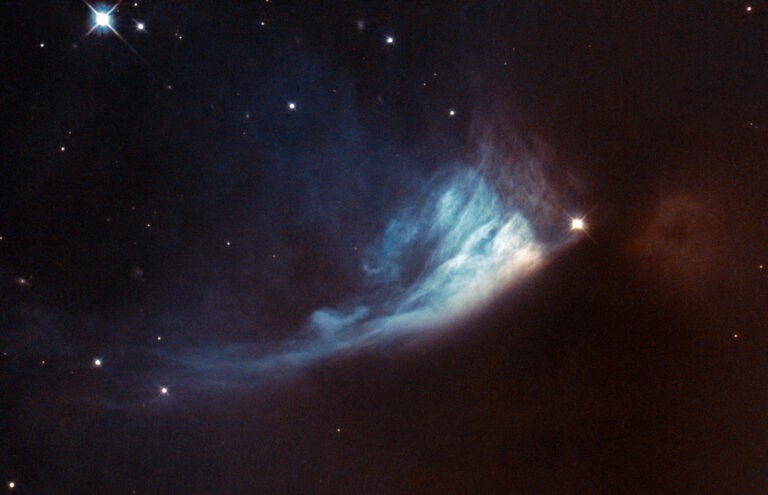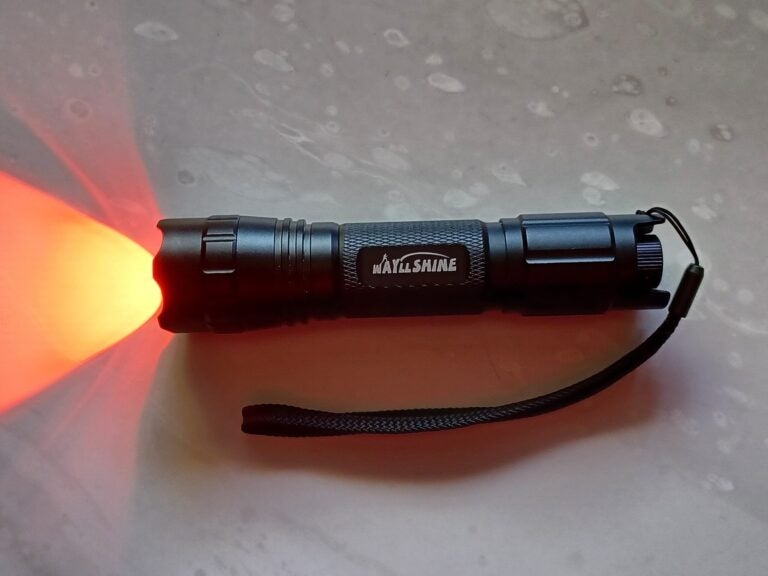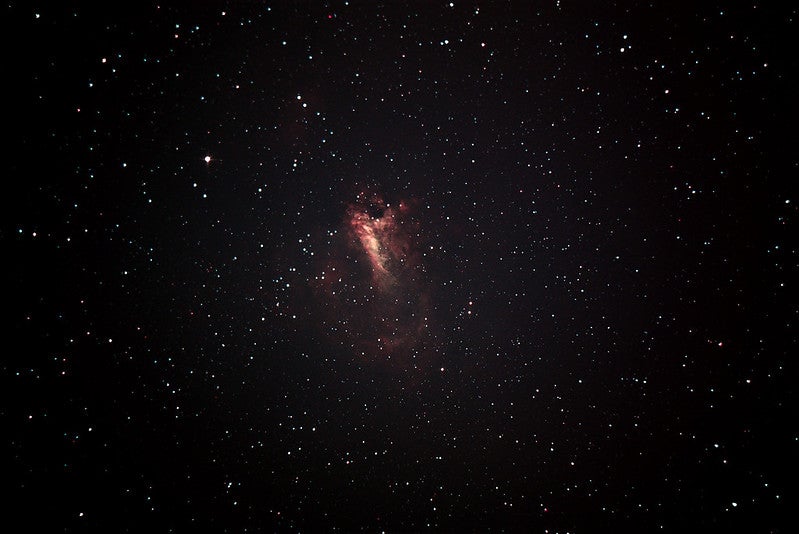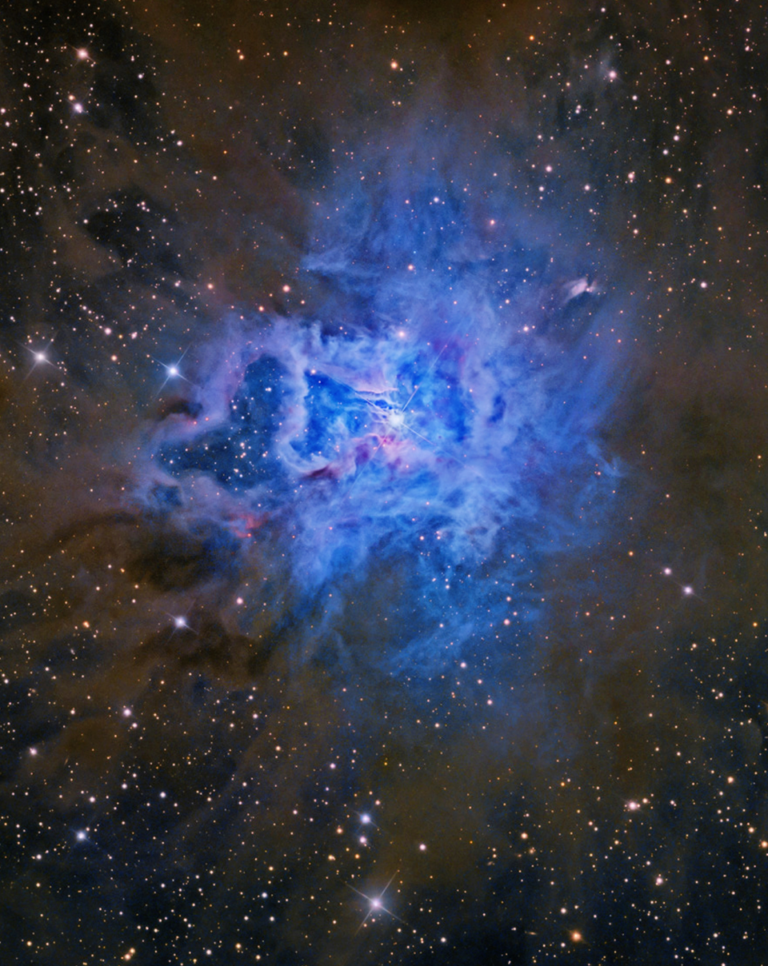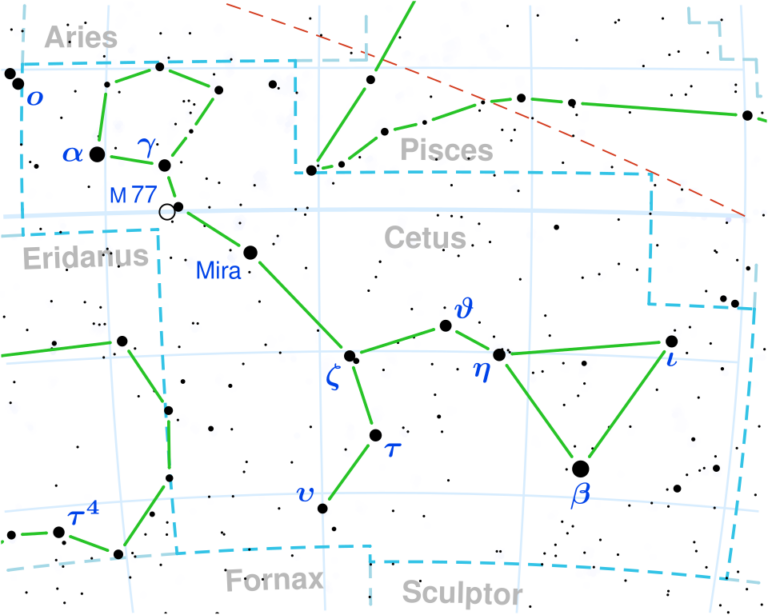Friday, May 14
Start out the week with a two-for-one bonus in the hindquarters of Leo the Lion. Already high in the south at sunset, the Lion is perfectly poised for evening observing. Focus in on magnitude 2.6 Zosma, which forms the top of a right triangle with Denebola (the tip of Leo’s tail) and Chertan.
First up, Comet C/2020 R4 (ATLAS) is flying high about 10° northeast of Zosma. The comet, which was discovered Sept. 12, is fading and will require a larger scope (10 inches) to capture. But this is your last chance to see it — after the Moon begins to interfere, the comet will likely remain gone from view as it skims away from the Sun. It’s not slated to return for 1,000 years.
Next, slide over to a brighter target: asteroid 4 Vesta, which appears as a magnitude 7.5 dot in the other direction, about 6° southwest of Zosma. Unlike ATLAS, Vesta is within easy reach of binoculars. Because it moves so slowly, you’ll likely want to draw the star field and then return over the next few days to see which object has moved — that’s your target. Three days should be enough to show the space rock’s apparent motion against the stationary stellar background.
Sunrise: 5:46 A.M.
Sunset: 8:08 P.M.
Moonrise: 7:33 A.M.
Moonset: 11:06 P.M.
Moon Phase: Waxing crescent (7%)
*Times for sunrise, sunset, moonrise, and moonset are given in local time from 40° N 90° W. The Moon’s illumination is given at 12 P.M. local time from the same location.
Saturday, May 15
Saturn’s largest, brightest moon, Titan, will pass due north of the planet this afternoon. Granted, that’s when it’s invisible in the bright daytime sky — instead, you can catch the magnitude 8.4 moon 1′ north-northwest of Saturn early this morning.
The ringed planet, which glows at magnitude 0.5, rises in Capricornus around 1:30 A.M. local time and climbs higher in the sky until it’s lost to morning twilight. It’s located a mere 40′ west of magnitude 4 Theta (θ) Capricorni. Saturn is currently about 9.7 astronomical units from Earth (1 astronomical unit, or AU, is the average Earth-Sun distance) and appears 17″ in diameter. Its rings stretch 40″ wide and appear 11″ across the minor axis — narrower than in previous apparitions, but it means the planet’s southern polar region is becoming visible as its orientation relative to Earth changes.
Come back tomorrow morning to look again, when Titan will appear northeast of the planet.
Sunrise: 5:45 A.M.
Sunset: 8:09 P.M.
Moonrise: 8:18 A.M.
Moonset: 11:58 P.M.
Moon Phase: Waxing crescent (13%)
Sunday, May 16
The Moon passes 1.5° north of Mars at 1 A.M. EDT. At that time, however, the pair is below the horizon for Northern Hemisphere observers. By sunset, the waxing Moon has pulled away from the Red Planet, but both are still visible in the constellation Gemini as darkness falls. An hour after sunset, the Moon is nearly 10° east of the planet and is actually blocking, or occulting, magnitude 3.6 Kappa (κ) Geminorum. An hour later, the star is once again visible as the Moon continues its motion across the sky.
Mars currently glows at magnitude 1.7 and spans a mere 4″ on the sky. It’s located near where the Twins’ waists are drawn, below and between the two bright stars that mark the boys’ heads: Castor (right) and Pollux (left).
Sunrise: 5:44 A.M.
Sunset: 8:10 P.M.
Moonrise: 9:11 A.M.
Moonset: —
Moon Phase: Waxing crescent (21%)
Monday, May 17
Mercury reaches greatest eastern elongation at 2 A.M. EDT, when it will stand 22° from the Sun. That makes tonight Mercury’s best evening apparition of the year.
Thirty minutes after sunset, Venus and Mercury are still aloft. Venus, which is a bright magnitude –3.9, is nearly 6° high and sits 8.5° below fainter (magnitude 0.4) Mercury. Watch for them in the darkening sky, particularly as several other bright stars begin to appear around them: Betelgeuse in Orion, Capella in Auriga, and Algol in Perseus.
Shortly before sunset, Venus passed 6° north of Aldebaran in Taurus at 7 P.M. EDT. Unfortunately, the star will set while the sky is still too bright for most observers to see.
Sunrise: 5:43 A.M.
Sunset: 8:11 P.M.
Moonrise: 10:09 A.M.
Moonset: 12:45 A.M.
Moon Phase: Waxing crescent (29%)
Tuesday, May 18
The solar system’s most distant planet, Neptune, rises a few hours before dawn in the constellation Aquarius. The magnitude 7.8 planet is within reach of binoculars, glowing about 7.5° south of the Circlet in Pisces and 5.4° east of 4th-magnitude Phi (ϕ) Aquarii. Spanning just 2″ due to its great distance of 30 AU, the ice giant will appear as a flat, bluish “star.” To its west are much brighter Jupiter — also in Aquarius and easily visible with the naked eye — and Saturn, again a naked-eye object in Capricornus.
Since you’ve already got your binoculars out, let’s look farther above Neptune in the western portion of Pegasus. There you’ll find M15 — one of the galaxy’s oldest globular clusters. With a visual magnitude of 6.2 and a girth of about 18′, this densely concentrated cluster is a rewarding object for any observer.
Sunrise: 5:42 A.M.
Sunset: 8:11 P.M.
Moonrise: 11:13 A.M.
Moonset: 1:27 A.M.
Moon Phase: Waxing crescent (39%)
Wednesday, May 19
First Quarter Moon occurs at 3:13 P.M. EDT, so this evening is the perfect time to get in some lunar observing. An hour after sunset, our satellite is high in the west, near the brightest star (Regulus) in Leo the Lion.
Turn a telescope on the Moon’s upper left portion to see the lunar Apennine mountain range curving up out of the terminator, which is the line that separates night and day. Named for their earthly counterparts, which form the backbone of Italy, the lunar Apennines thrust upward roughly 3 miles (5 kilometers) and form the lower curve of Mare Imbrium. It was in the foothills of these mountains, near Hadley Mons, that Apollo 15 touched down in 1971, carrying the first Lunar Roving Vehicle.
The prominent crater visible near the mountain range is Archimedes, with Autolycus (smaller) and Aristillus (larger) to its upper right.
Sunrise: 5:41 A.M.
Sunset: 8:12 P.M.
Moonrise: 12:19 P.M.
Moonset: 2:03 A.M.
Moon Phase: Waxing crescent (49%)
Thursday, May 20
Venus stands 7° below Mercury after sunset this evening. The two planets are setting fast in the west, both located in the upper portion of Taurus the Bull. Although it’s much lower, Venus is also significantly brighter; you’ll spot it first and can use it as a signpost to look for Mercury higher up in the sky. Binoculars will make the search easier in the deepening twilight.
As the sky grows darker, the tips of Taurus’ horns — Alheka (left) and Elnath (right) — will appear. To their upper right is bright Capella, blazing in Auriga the Charioteer. This constellation hosts several appealing star clusters: M36, M37, and M38. All three are in the southern portion of the constellation, so you’ll want to search them out sooner rather than later. These are all open clusters that will look best in binoculars or small scopes. See if you can recognize their namesakes: M36 is known as the Pinwheel Cluster and M38 is called the Starfish Cluster.
Sunrise: 5:40 A.M.
Sunset: 8:13 P.M.
Moonrise: 1:27 P.M.
Moonset: 2:34 A.M.
Moon Phase: Waxing gibbous (60%)
Friday, May 21
The Moon hangs in Virgo tonight after sunset. To that constellation’s southwest is a smaller, lesser-known figure: Corvus the Crow. Occupying only 184 square degrees — 0.45 percent of the sky — Corvus is formed by five stars, alpha through epsilon, and is home to several deep-sky objects on the NGC list. Unfortunately, tonight is not a great time to view them, since the bright Moon is so nearby. Still, now that you can recognize the Crow’s bright naked-eye stars, you’ll know exactly where to return with your telescope when the sky is next moonless. Some of this constellation’s best showpieces are the Antennae Galaxies (NGC 4038 and NGC 4039) and the planetary nebula NGC 4361.
Corvus is bordered not only by Virgo, but also Crater and Hydra. Nearby in the sky are Libra and Leo, to the east and west, respectively.
Sunrise: 5:40 A.M.
Sunset: 8:14 P.M.
Moonrise: 2:37 P.M.
Moonset: 3:03 A.M.
Moon Phase: Waxing gibbous (70%)

